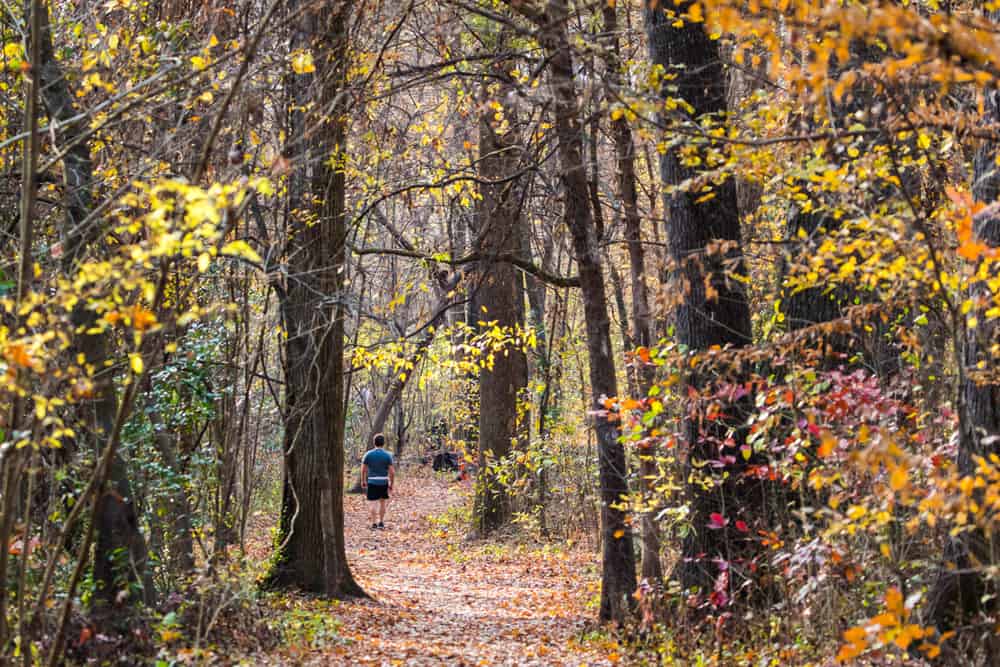NatureZen: Slow It Down
Words and photos by Melissa McMasters
At the end of a string of chaotic days recently, an Instagram scroll brought me to a gentle reminder. In the Northern hemisphere, we’re heading into the shortest days of the year, and therefore the most darkness. As animals, our biology is telling us to slow down, be still, and expend less energy. At the same time, our culture is telling us to shop, attend parties, prepare feasts, finish projects, and generally go full-throttle until December 31, after which point we’ll need to embark on an immediate self-improvement campaign to undo all the damage our excesses did over the past few months.
I’m as guilty of letting end-of-year madness overtake me as the next person, but I also have a prescription that helps: even if it’s just ten minutes, I’ve been trying to spend some time in the Old Forest every day. It’s the perfect mental and physical reminder that we are a part of something outside of all those cultural pressures.
After spring, winter is my favorite season in the forest. It’s so nice to feel the cold air on my face (recent 79-degree days notwithstanding), and the birds are easier to see without leaves getting in the way. What might you see on a forest walk right now?
Walking along the Old Forest Loop, it’s not long before you come to the Two Sisters, a tulip poplar tree with two codominant trunks.
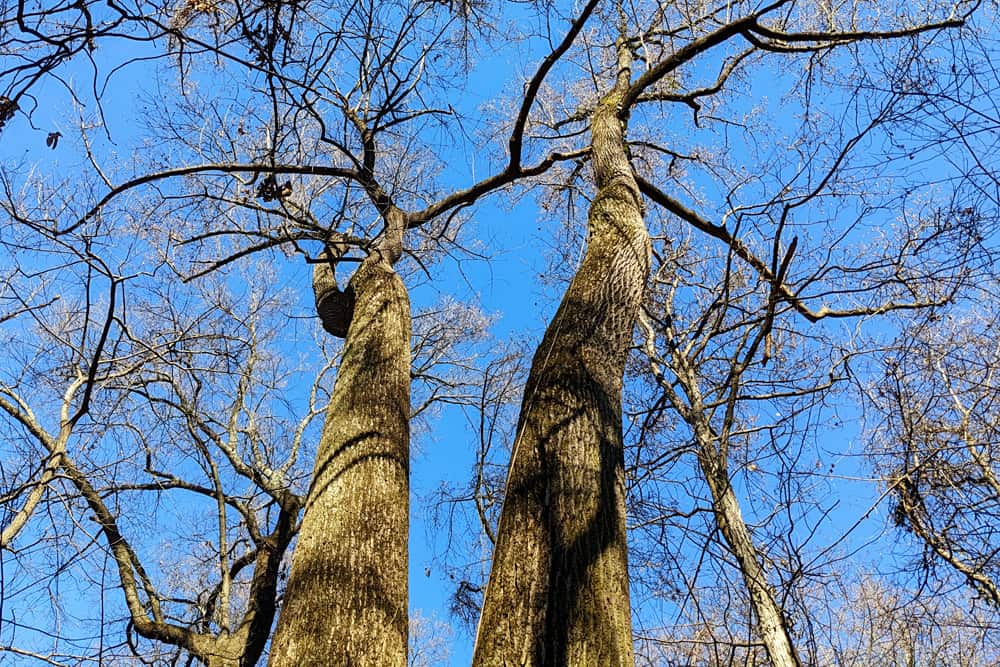
Lower to the ground, this time of year is a great one for spotting oak saplings, which sometimes retain their leaves into the winter in a process called marcescence. Older trees don’t tend to do this; it happens more often in immature trees that have yet to flower and in trees whose branches are low to the ground.
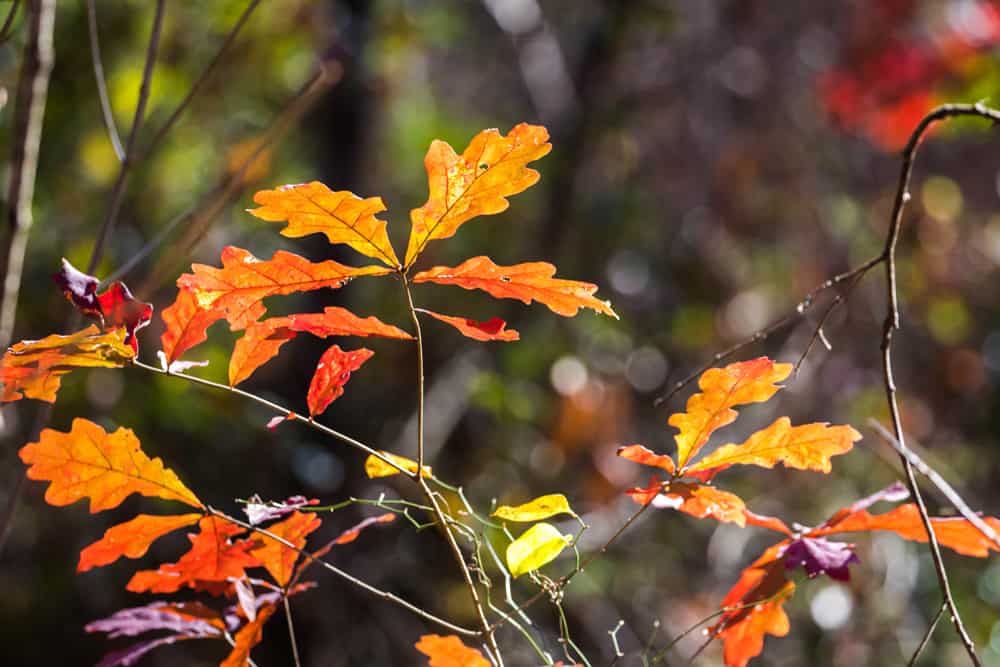
The trees are full of birds foraging for insects and spiders. Often you’ll begin to hear soft chipping noises and wander into what I think of as a pocket of songbirds. This is because in the wintertime, birds don’t need to defend a nesting territory, so they can combine their efforts and band together to look for resources. It’s more efficient than every bird seeking out a bug-rich tree on its own. This brown creeper is one of my favorites; if you stand and pay attention, you may see a well-camouflaged little bird spiraling up a tree trunk, flying down to the base of another, and starting the process over again.
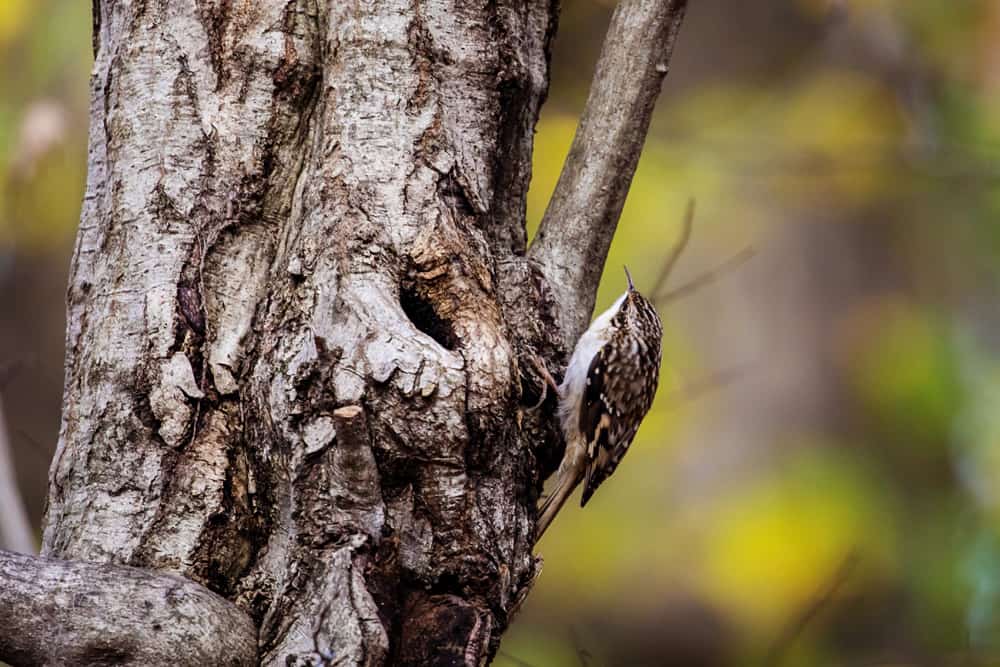
Tufted titmice are ubiquitous in the winter, chattering and stuffing their mouths full of acorns, which they slam against branches to open.
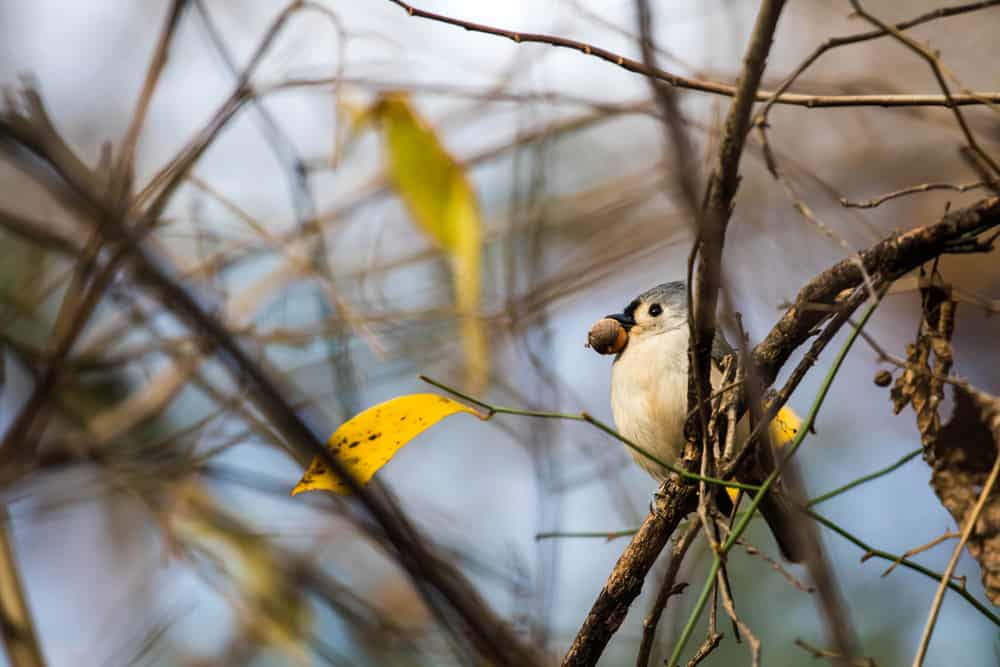
Carolina wrens are an exception to the rule of territorial defense only occurring in nesting season. These birds pair off and defend territory year-round. Males sing from their territory to warn off others, and often get into “counter-singing” conversations with other males around the forest. Often, when a male starts singing, his mate chimes in with a slurred chatter sound. Female wrens don’t sing, but they make their presence known!
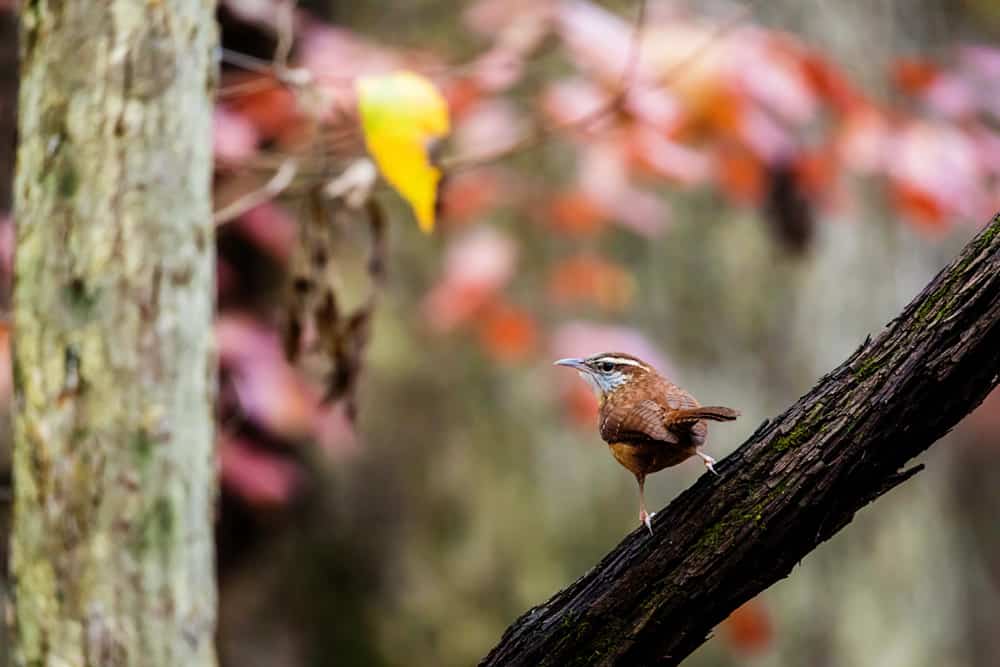
Winter is a great time to spot raptors. This Cooper’s hawk flew up to a branch right in front of me and tick-tocked its tail side to side (it reminded me of Samantha on “Bewitched,” if Samantha had been a master of the death glare).
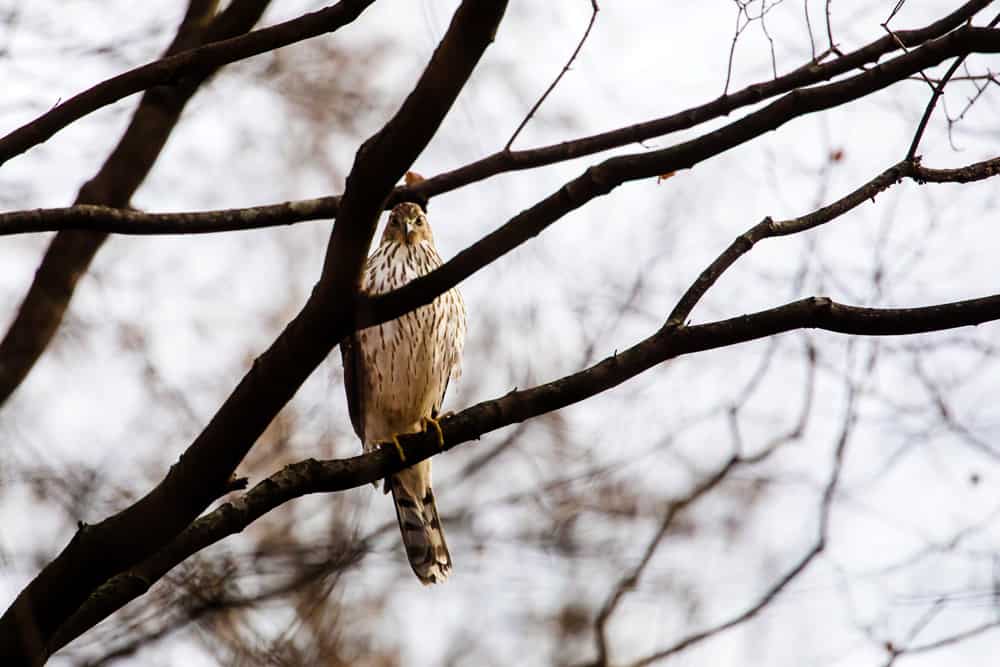
You know I love to look for insects, but in the wintertime I generally only see them when a bird has caught one! This white-throated sparrow has a leaf-footed bug in its mouth.
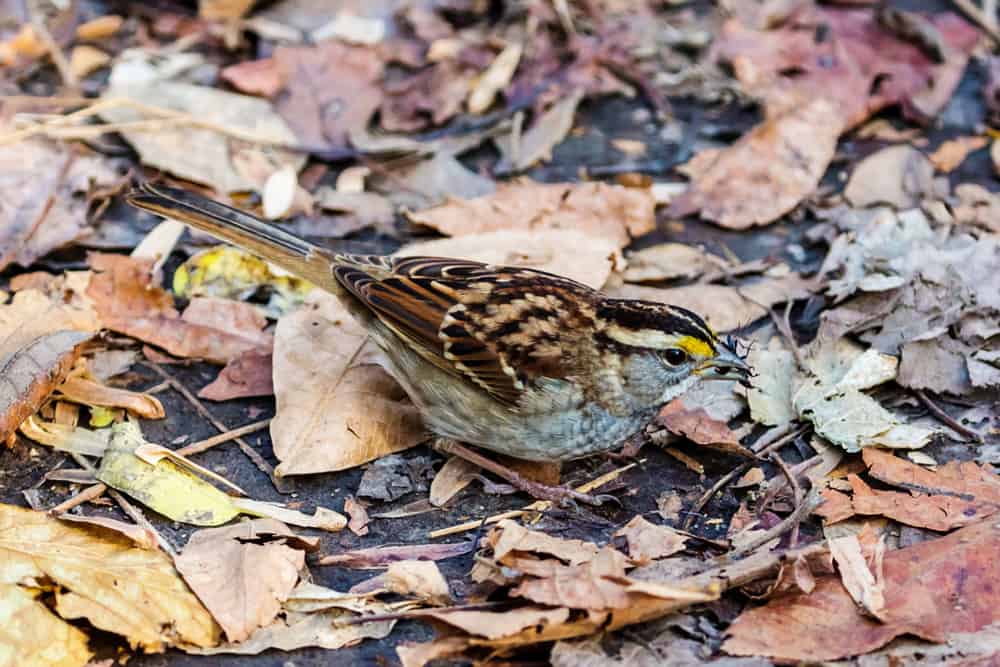
I’m still learning my fungi, but I love seeing the colorful formations on the downed logs that will one day be the soil on the forest floor. This turkey-tail has a beautiful pattern.
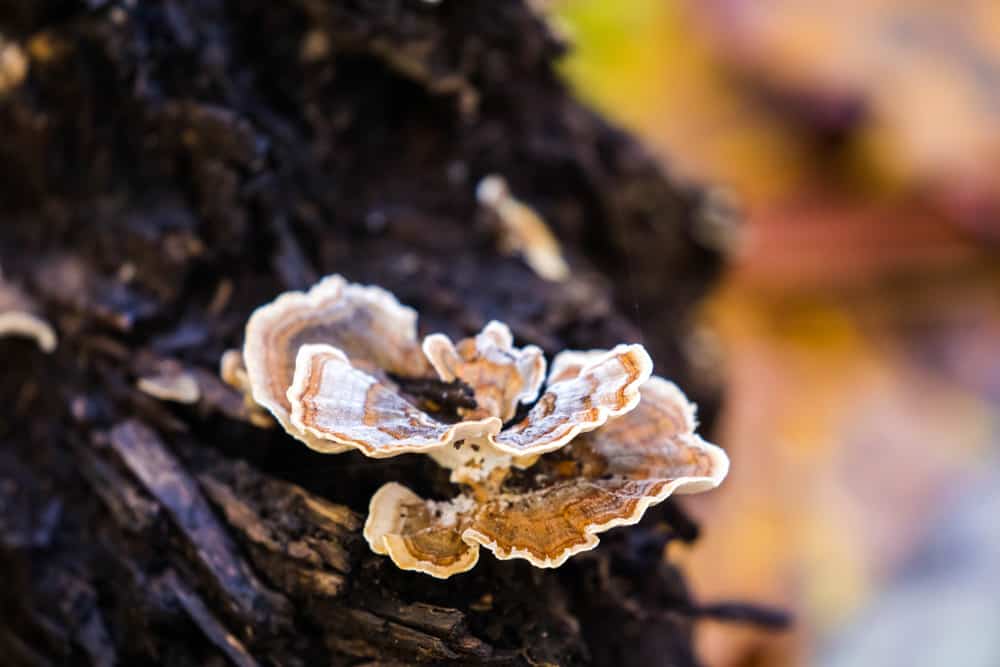
What would winter be without our resident mammals stuffing their faces as they stockpile resources? This Eastern gray squirrel is proud of its recent acquisition.
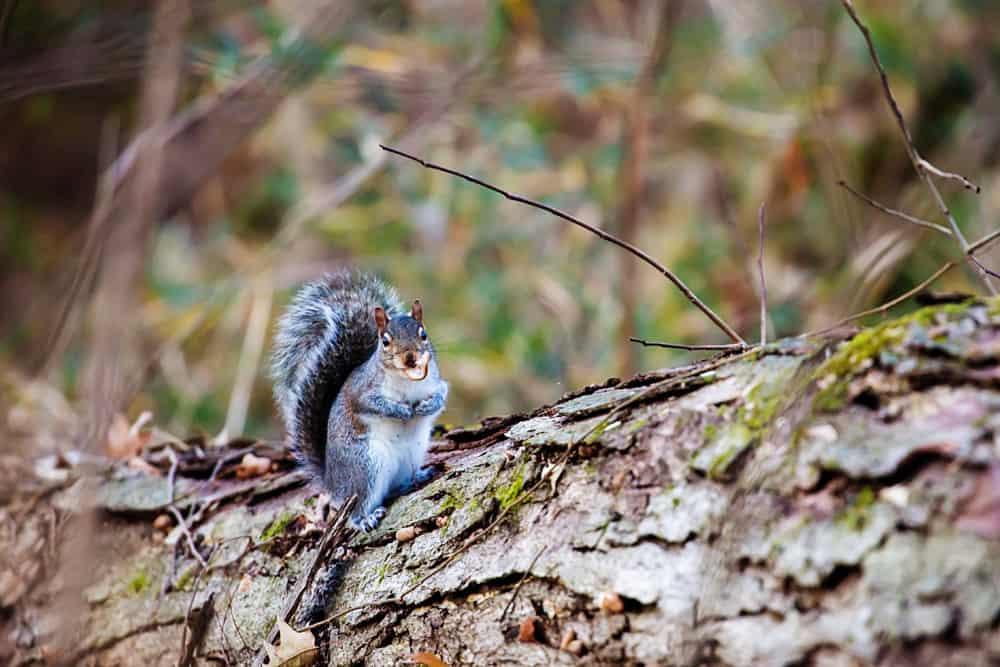
Normally, Eastern chipmunks break into a run whenever I see them, but this one was so weighed down by its lunch that it decided to go ahead and stare me down.
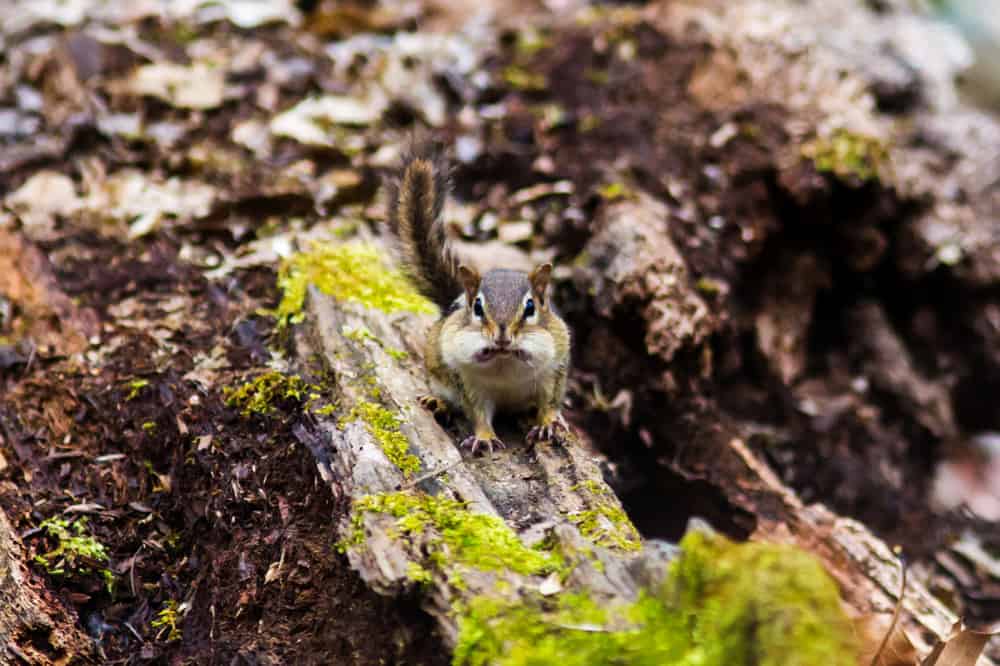
I hope you’ll take a little time from the frenetic pace of the holidays to take a nice slow walk in the Old Forest and connect to the rhythm of the season.

